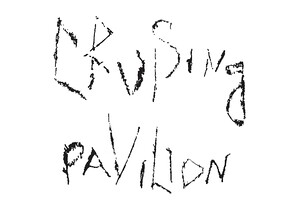Gay sex, architecture and cruising cultures
May 24–July 1, 2018
Giudecca 800/o
30133 Venice
Italy
Cruising usually describes the quest for sexual encounters between homosexual men in public spaces, but it cannot be reduced to neither men nor homos. This sexual practice generally takes place in public sites like parks, toilets, and parking lots, or in dedicated establishments like bathhouses and sex clubs.
From the 19th century Vauxhall pleasure gardens in London to the ’80s Mineshaft BDSM club in New York, the Cruising Pavilion looks at the conflictual architecture of cruising. Somewhere between anti-architecture and vernacular, the spatial and aesthetic logic of cruising is inseparable from the one of the proper metropolis. Cruising is the illegitimate child of hygienist morality. Relegated to the realm of depravity, it feeds off its most structuring disciplinary features. In the bathrooms built for cleanliness and the parks made for peacefulness, and also through the figures of the policeman and the flâneur, the modern city is cruised, dismantled and made into a drag of itself. The dungeon becomes playful, the labyrinth protective, and the baths erotic. If “architectural discourse is a deodorizer,” then cruising is the powerful human smell that haunts the dreams of Jean Genet.
The historical model of cruising is evolving and perhaps even dying. The contemporary combination of Grindr, urban development and the commodification of LGBT+ cultures has emptied established cruising grounds and replaced gay bars with condos. Geosocial apps have generated a new psychosexual geography spreading across a vast architectonic of digitally interconnected bedrooms, thus disrupting the intersectional idealism that was at play in former versions of cruising. Today, class, race and gender might be as regulated by the erotic surface of the screen as the architecture of the city.
By featuring contributions from artists and architects, the Cruising Pavilion wishes to highlight the failure to consider Freespace as defined by this edition of the Venice Architecture Biennale, without questioning the hetero-normative production of space itself. Architecture is a sexual practice and cruising is one of the most crucial acts of dissidence.
The Cruising Pavilion is a project curated by Pierre-Alexandre Mateos, Rasmus Myrup, Octave Perrault and Charles Teyssou that will take place at Spazio Punch in Venice, Italy from the May 24 to July 1, during the 16th Venice Architecture Biennale. It is produced in collaboration with Spazio Punch. Since 2011, Spazio Punch is a non-profit Venetian organization on the Giudecca Island that promotes contemporary culture through events, exhibitions and talks.
Participants:
Alison Veit, Andreas Angelidakis, Andrés Jaque / Office for Political Innovation, Atelier Aziz Alqatami, Carlos Reyes, Diller Scofidio + Renfro, DYKE_ON, Etienne Descloux, Hannah Quinlan & Rosie Hastings, Henrik Olesen, Ian Wooldridge, Lili Reynaud Dewar, Monica Bonvicini, S H U Í (Jon Wang & Sean Roland), Studio Karhard, Studio Odile Decq, Özgür Kar, Pascal Cribier & Louis Benech, Pol Esteve & Marc Navarro, Prem Sahib, Tom Burr, Trevor Yeung
Opening hours: Tuesday–Sunday 2–7pm
The Cruising bar will be opened during exhibition hours.
Events:
–Opening: Thursday, May 24, 2-4pm
–Private tour of the “Garden of Eden” historical cruising ground on Giudecca: details and RSVP on cruisingpavilion [at] gmail.com
–Special event at the Cruising Bar: Friday, May 25, 7pm–12am



